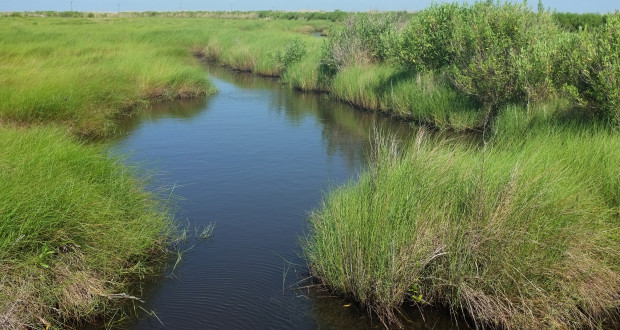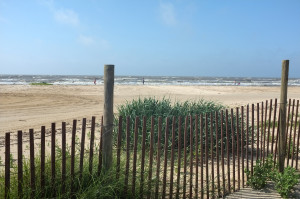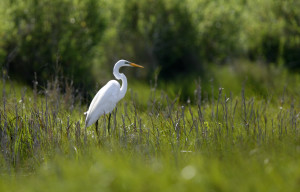A sea of cordgrass blankets the refuge’s 58,000 acres of lakes, ponds and bayous. There are no trails, so without a boat, much of the refuge is inaccessible. But a sightseeing road divides the wetlands and hugs the shore of Clam Lake, which has platforms for fishing and crabbing. The road crosses a one-lane bridge, briefly turns to gravel and then dead-ends at the Intracoastal Waterway.
During various times of the year, the refuge is host to as many as 285 species of birds. Geese descend on McFaddin’s marshes from October to March, along with as many as 100,000 ducks from more than two dozen species. During the spring, neotropical migrants from Central and South America stop here after their exhausting flight across the Gulf of Mexico, seeking food and shelter among the scattered woods on the refuge. Other residents of the marsh include northern river otter, bobcats, gray fox and coyotes.
The refuge is part of the Chenier Plain that extends from southwestern Louisiana to East Bay in southeast Texas. The U.S. Fish and Wildlife Service explains that:
“Elevated sediment ridges, called cheniers, were once the actual shoreline of the Gulf of Mexico and are the distinguishing feature of this landscape. These cheniers generally run parallel to the Gulf of Mexico or as fan-shaped alluvial deposits at the mouths of rivers. For centuries, cheniers have trapped high annual rainfall and frequent floodwaters that slowly flow over the low-lying coastal prairie and marsh. Supporting the growth of woody vegetation, the word chenier is French for “place of oaks.”
McFaddin’s diverse landscape begins with beaches and tidal flats at the shoreline before transitioning into brackish and freshwater marshes and tall grass prairie. Its plant community moves from saltmeadow cordgrass, camphor weed and gulf croton near the shore to long leaf pondweed, banana water lily and widgeon grass in the marshes and wooly rosemallow, bushy bluestem and gulf cordgrass on higher ground.
Getting to McFaddin is more difficult since the road to Bolivar Peninsula washed out and requires a circuitous route by way of Sabine Pass. The good news is that you’re rewarded with a chain of wildlife sanctuaries that includes Texas Point National Wildlife Refuge, Sabine Woods Sanctuary and Sea Rim State Park. A relatively new visitors center in Anahuac covers several of the area refuges, including McFaddin, Texas Point, Anahuac and Moody.
REFUGE GALLERY











You must be logged in to post a comment.